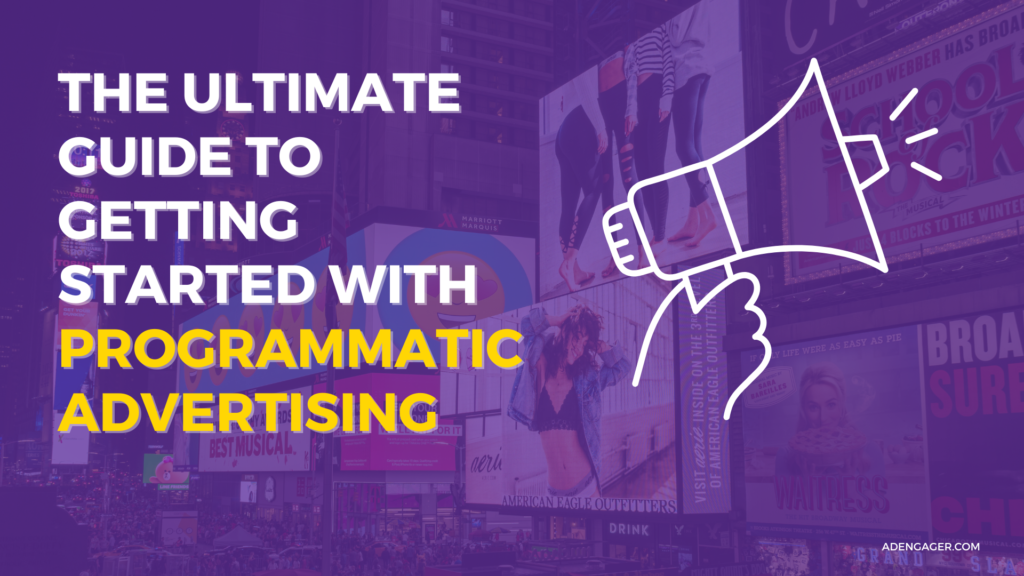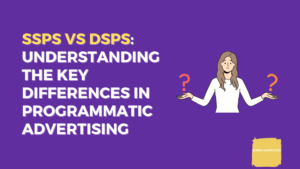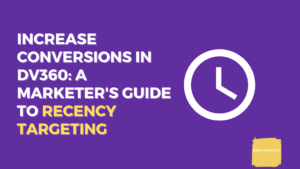The Ultimate Guide to Getting Started with Programmatic Advertising

Introduction to Programmatic Advertising: What You Need to Know
Programmatic advertising has revolutionized the way digital advertising space is bought and sold. By leveraging automated software, advertisers can now efficiently target their ads and gauge their impact. This modern approach allows businesses to effectively reach their intended audience and maximize their advertising efforts.
Understanding Programmatic Advertising
Programmatic advertising involves a series of interconnected steps. First, ad space is made available on ad exchanges, which function as virtual marketplaces where publishers offer their ad inventory for sale. Advertisers then create campaigns and specify their desired target audience using various criteria such as demographics and interests.
The real magic happens during the bidding process, which occurs in real-time auctions. Advertisers bid against each other to secure ad space, and the highest bidder wins the auction, having their ad displayed to the intended audience. Finally, the ad is served to users on the publisher’s website or app, completing the programmatic advertising cycle.
The Importance and Benefits of Programmatic Advertising
The significance of programmatic advertising lies in its ability to unlock several key advantages:
- Expanded Audience Reach: Unlike traditional advertising methods, programmatic advertising taps into a vast network of ad exchanges and publishers. This broad reach enables businesses to target a wider audience by showcasing their ads across diverse websites and apps.
- Enhanced Targeting Capabilities: Programmatic advertising empowers advertisers to fine-tune their targeting efforts. By utilizing a range of criteria, such as demographics, interests, and user behavior, businesses can precisely deliver their ads to the right people at the right time, maximizing their relevance and impact.
- Accurate Results Measurement: Programmatic advertising offers real-time tracking and reporting, providing advertisers with granular insights into their campaigns. This level of data-driven analysis enables businesses to measure their ad performance accurately, optimize their strategies, and make informed decisions to enhance future campaigns.
Programmatic advertising has revolutionized the advertising industry by introducing automation, precision targeting, and real-time optimization. By embracing this modern approach, businesses can effectively engage their target audience and achieve optimal results from their advertising efforts.
Types of Programmatic Ads: A Guide for Advertisers
Programmatic ads come in various types, each catering to different platforms and audience preferences. Let’s explore the diverse landscape of programmatic advertising:
- Display Ads: These are the most commonly encountered programmatic ads. They comprise static or animated images or videos that appear on websites or apps. Display ads offer the advantage of targeting users based on their interests, demographics, or location.
- Video Ads: Another popular type, video ads can be seen as pre-roll, mid-roll, or post-roll ads, appearing before, during, or after a video. They provide an engaging way to deliver your message. Video ads can be targeted based on user viewing history, alongside factors used for display ads targeting.
- Social Ads: Programmatic ads on social media platforms, such as Facebook, Twitter, and Instagram, fall into this category. Social ads leverage the user’s social media activity, interests, and demographics for effective targeting. They allow you to reach users who are already engaged with your brand on these platforms.
- Audio Ads: These programmatic ads are designed for streaming platforms like Spotify and Pandora. They make use of the user’s listening habits, interests, and demographics for targeting. Audio ads are particularly effective for reaching users who are on the go and prefer an auditory experience.
- Native Ads: Programmatic native ads blend seamlessly with the surrounding content, whether on websites, apps, or social media feeds. They are crafted to match the form and function of the platform they appear on. Native ads can be targeted based on user interests, demographics, or location, enabling a non-disruptive and contextual advertising experience.
- Digital Out-of-Home (DOOH) Ads: These programmatic ads are displayed on digital billboards, bus shelters, and other digital displays in public spaces. DOOH ads utilize targeting factors such as user location, time of day, or even weather conditions. They are a powerful way to capture the attention of users in specific locations.
Each type of programmatic ad offers its own unique advantages and considerations. Display ads are suitable for reaching a wide audience, while video ads excel in delivering interactive content. Social ads enable engagement with an already interested user base, audio ads capture the attention of on-the-go users, native ads blend seamlessly with the content, and DOOH ads target users in specific locations.
Understanding the different programmatic ad types empowers advertisers to select the most effective approach for their target audience and desired outcomes.
The Top 5 Advantages of Programmatic Advertising
- Enhanced Precision in Targeting: Programmatic advertising revolutionizes ad targeting by enabling advertisers to reach their desired audience with greater accuracy compared to traditional methods. By leveraging programmatic capabilities, ads can be precisely targeted based on a multitude of factors, including user interests, demographics, and location. This level of granularity ensures that the right message reaches the right people, enhancing campaign effectiveness.
- Optimized Return on Investment (ROI): Programmatic advertising empowers advertisers to maximize their ROI by ensuring that their ads are displayed to the most relevant individuals at the optimal moment. The real-time tracking and measurement capabilities of programmatic ads enable advertisers to monitor their campaign performance and make necessary adjustments in real time. This data-driven approach enables advertisers to allocate their budgets effectively and achieve better results.
- Flexibility and Customization: Unlike traditional advertising approaches, programmatic advertising offers advertisers unparalleled flexibility and customization options. Advertisers can choose from a wide range of websites and apps to display their ads, expanding their reach and targeting specific audiences. Additionally, programmatic advertising allows advertisers to define their own budgets and bidding strategies, providing them with the freedom to optimize their campaigns based on their unique objectives.
- Cost Efficiency: Programmatic advertising streamlines the process of buying and selling ad space, resulting in cost savings for advertisers. The automation of ad transactions reduces manual labor and time-consuming negotiations, enabling advertisers to efficiently allocate their resources. Furthermore, the programmatic ecosystem often presents opportunities for advertisers to secure favorable deals on ad space, enhancing cost-effectiveness.
- Actionable Insights: Programmatic advertising equips advertisers with valuable insights into their target audience. Real-time tracking and measurement enable advertisers to monitor key performance metrics and analyze the effectiveness of their campaigns. These insights empower advertisers to make data-driven decisions, refine their strategies, and optimize their ad creatives to achieve better results.
Programmatic Creative Best Practices: How to Create Ads That Get Results
When it comes to creating ad creative for programmatic advertising, there are several best practices that can greatly enhance your campaigns:
- Relevance to the Target Audience: Ensure that your ads are tailored to your specific target audience. Leverage audience data to reach individuals who are most likely to be interested in your product or service.
- Eye-Catching and Engaging: Capture the attention of your audience by using high-quality images, videos, and compelling text in your ads. Aim to create visually appealing and engaging content that stands out.
- Conciseness and Clarity: Keep your ads concise and focused. Shorter ads tend to perform better, so aim to deliver your message effectively in a succinct manner.
- Clear Call to Action (CTA): Incorporate a clear and compelling call to action in your ads. Guide users on the desired action you want them to take, whether it’s visiting your website, signing up for a newsletter, or making a purchase.
Ad Personalization and Dynamic Creative Optimization (DCO): How to Reach Your Target Audience with Relevant Ads
Programmatic advertising goes beyond basic targeting capabilities by enabling ad personalization and dynamic creative optimization (DCO). These techniques allow you to create personalized and highly relevant ad experiences for individual users. Here are some examples of how ad personalization and DCO can be utilized in programmatic advertising:
- Personalized Product Recommendations: Utilize ad personalization to display different products or services to users based on their browsing history or purchase behavior. This approach ensures that users are shown offerings that align with their specific interests and preferences.
- Tailored Messaging for Different Segments: Employ DCO to dynamically adjust ad creative elements such as visuals, messaging, or offers based on user segments. By customizing the content to resonate with each segment, you can significantly enhance engagement and conversion rates.
- Contextual Relevance: Consider the context in which your ads are being displayed and adapt your creative accordingly. Aligning the ad content with the surrounding website or app context creates a more cohesive and engaging user experience.
- Real-Time Optimization: Continuously monitor the performance of your programmatic ads and leverage real-time data insights to optimize your campaigns. Make necessary adjustments to creative elements and targeting parameters based on user responses and campaign objectives.
By implementing ad personalization and leveraging DCO, you can maximize the effectiveness of your programmatic advertising efforts, increase user engagement, and ultimately drive better campaign results.
Challenges and Considerations in Programmatic Advertising: What You Need to Know
- Ad Fraud and Brand Safety: Ad fraud poses a significant challenge in programmatic advertising, as it involves deceptive practices that trick advertisers into paying for fake impressions or clicks. Various types of ad fraud exist, including click fraud, impression fraud, and domain spoofing. On the other hand, brand safety concerns arise when ads are displayed alongside inappropriate or offensive content, potentially damaging the advertiser’s brand reputation. Mitigating ad fraud and ensuring brand safety are crucial considerations in programmatic advertising.
- Ad Viewability and Ad Blocking: Ad viewability measures the percentage of times an ad is actually seen by users. Low ad viewability can diminish the effectiveness of programmatic advertising campaigns. Simultaneously, ad blocking, where software is used to prevent ad display, poses a challenge for advertisers aiming to reach their target audience. Overcoming ad viewability issues and understanding ad-blocking trends are vital for maximizing the impact of programmatic advertising.
- Data Privacy and Compliance: With growing concerns surrounding data privacy, advertisers must handle user data carefully and comply with relevant regulations, such as the General Data Protection Regulation (GDPR). Respecting user privacy, obtaining consent for data usage, and implementing proper data protection measures are essential for maintaining trust and complying with legal requirements.
- Transparency and Trust in the Ecosystem: Transparency refers to understanding how programmatic advertising operates, including the roles and processes involved. Trust is built on the belief that programmatic advertising functions fairly and reliably. Both transparency and trust are fundamental for a healthy and successful programmatic advertising ecosystem. Advertisers should seek platforms and partners that prioritize transparency, provide clear reporting, and adhere to ethical practices.
Additional Challenges and Considerations
The complexity of the ecosystem, lack of standardization, and the rapid pace of change are additional challenges in programmatic advertising. Understanding the ecosystem’s intricacies, selecting reliable partners, and staying updated with industry developments are necessary to navigate these challenges successfully.
Despite the obstacles, programmatic advertising remains a powerful tool for advertisers to efficiently reach their target audience. By investing time and resources to comprehend the ecosystem, leverage technology, and address key considerations, advertisers can harness the full potential of programmatic advertising to achieve their marketing goals.
Future Trends in Programmatic Advertising
The programmatic advertising landscape is a dynamic and ever-changing space, with several emerging trends that will shape its future trajectory. Let’s explore these trends in greater detail:
- The Rise of Privacy-Centric Solutions: With increasing concerns about data privacy, advertisers are under pressure to find privacy-centric solutions that respect user privacy while still delivering targeted ads. This has led to the development of innovative approaches that prioritize user consent, data anonymization, and transparent data handling practices. Privacy-enhancing technologies and techniques will become crucial for advertisers to maintain consumer trust and comply with evolving privacy regulations.
- The Growth of Contextual Targeting: Contextual targeting, an approach that focuses on delivering ads based on the content users are consuming, is gaining traction as a privacy-friendly alternative to more invasive targeting methods. By understanding the context in which ads are displayed, advertisers can deliver relevant messages without relying heavily on personal data. This trend is expected to continue as advertisers seek effective targeting options while respecting user privacy preferences.
- Increasing Use of Artificial Intelligence (AI): Artificial intelligence has already made significant contributions to programmatic advertising, enabling better targeting, measurement, and optimization capabilities. In the future, AI will play an even larger role, automating manual tasks, leveraging data insights for improved campaign performance, and delivering personalized ad experiences at scale. Machine learning algorithms will continue to evolve, empowering advertisers to make data-driven decisions and enhance campaign effectiveness.
- The Growth of Connected TV (CTV):Connected TV has witnessed remarkable growth as an advertising platform, and programmatic advertising is poised to play a pivotal role in reaching CTV audiences. With the rise of streaming services and connected devices, programmatic ad buying enables advertisers to deliver targeted ads to viewers watching content on smart TVs, streaming devices, and other CTV platforms. This provides an opportunity to engage audiences in a more personalized and relevant manner.
The Expansion of Programmatic into New Channels
While programmatic advertising initially gained prominence in display and video advertising, its influence is extending to other channels. Advertisers are increasingly exploring programmatic solutions for audio advertising (e.g., podcasts and streaming music), native advertising (seamlessly integrated ads within content), and digital out-of-home (DOOH) advertising. This expansion allows advertisers to leverage programmatic capabilities and automation across a wider range of channels, enabling more efficient and targeted ad delivery.
As programmatic advertising continues to evolve, embracing these trends will be crucial for advertisers to stay competitive and connect with their target audiences effectively. By adopting privacy-centric approaches, leveraging contextual targeting, harnessing AI capabilities, tapping into CTV opportunities, and exploring new channels, advertisers can navigate the ever-changing programmatic landscape and unlock its full potential.
In conclusion, programmatic advertising offers advertisers a powerful and efficient means to reach their target audience with personalized and relevant messages. By leveraging programmatic capabilities, advertisers can effectively target their ads, track campaign performance in real-time, and make data-driven optimizations for better results.
As the programmatic advertising landscape continues to evolve, staying abreast of emerging trends and embracing new technologies will be crucial for advertisers to remain competitive. Privacy-centric solutions, contextual targeting, AI integration, the rise of CTV, and expanding programmatic into new channels all present exciting opportunities for advertisers to enhance their campaigns and connect with audiences in meaningful ways.
While navigating the complexities of programmatic advertising may require ongoing learning and adaptation, the rewards are significant. Advertisers who invest in understanding the ecosystem and the technology will be well-positioned to capitalize on the future of digital advertising.
In the ever-evolving world of programmatic advertising, embracing innovation, maintaining transparency, prioritizing user privacy, and fostering trust will be key elements for advertisers to unlock the full potential of this dynamic advertising approach. With its ability to deliver targeted, data-driven campaigns, programmatic advertising is set to play an increasingly vital role in the future of the advertising industry.






